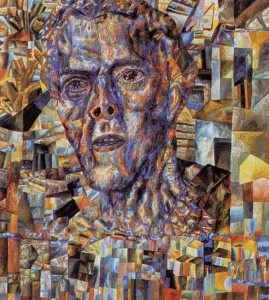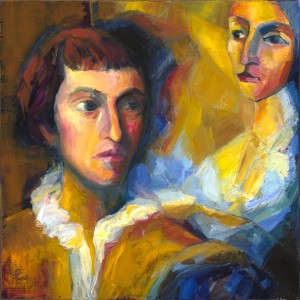William Shakespeare. Sonnet 19
Devouring Time, blunt thou the lion’s paws,
And make the earth devour her own sweet brood;
Pluck the keen teeth from the fierce tiger’s jaws,
And burn the long-lived phoenix in her blood;
Make glad and sorry seasons as thou fleet’st,
And do whate’er thou wilt, swift-footed Time,
To the wide world and all her fading sweets;
But I forbid thee one most heinous crime:
O! carve not with thy hours my love’s fair brow,
Nor draw no lines there with thine antique pen;
Him in thy course untainted do allow
For beauty’s pattern to succeeding men.
Yet, do thy worst old Time: despite thy wrong,
My love shall in my verse ever live young.
Patrick Stewart reading this sonnet
This is the first post of this kind, but I have no doubt there will be more on this long journey: a re-work of an already posted sonnet painting. This is the way I generally work, after all: there are many paintings that seem complete in the process and some time afterwards, but then just call for a change.
Here, the color scheme was way too balanced for the powerful rhythms of the sonnet, and, in some places, the concept and structure of the painting was weakened by my hesitations about how strongly it should be linked to David. In the re-work, I suppressed the yellows and allowed the devouring time a freer reign in the picture plane.



